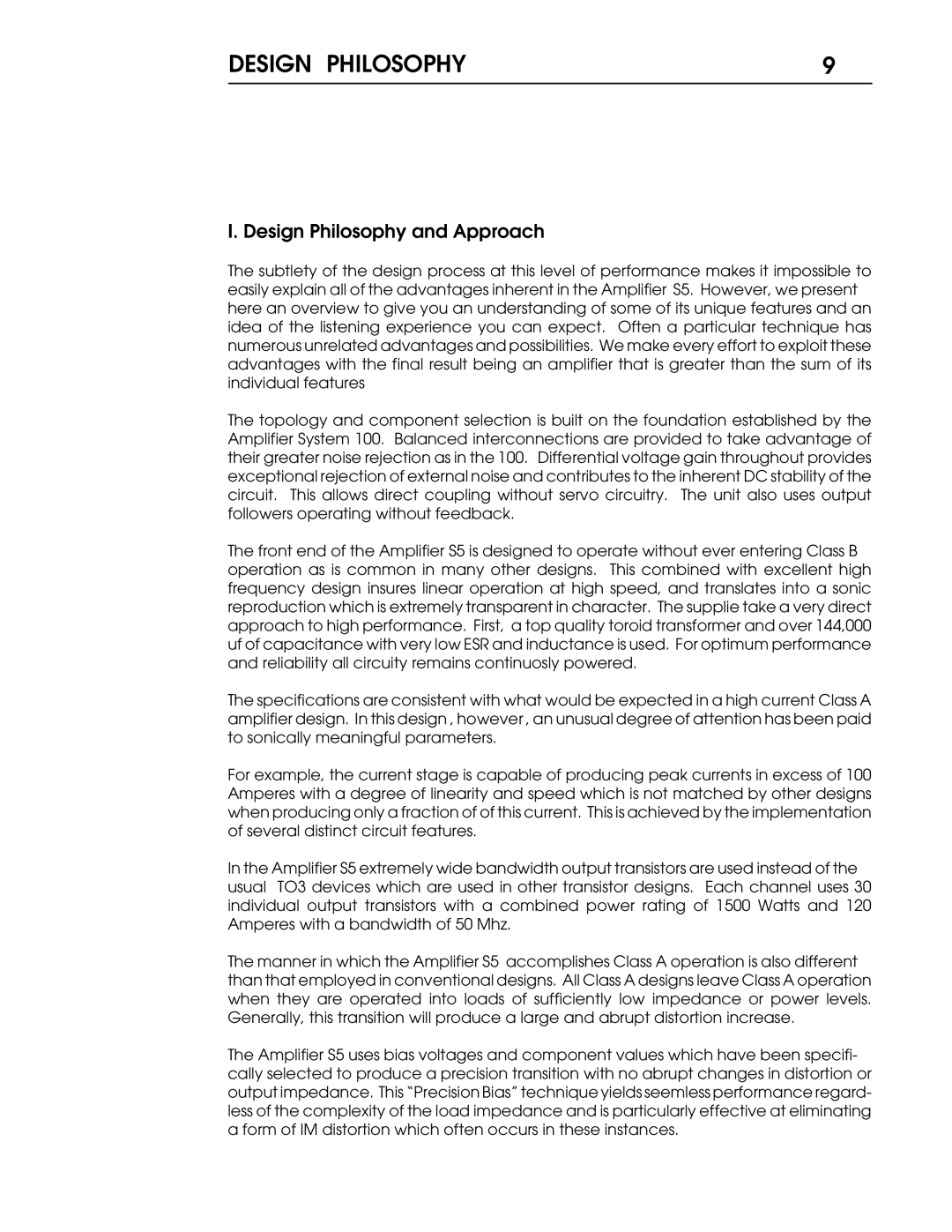S5 specifications
The Coda S5 is an innovative and versatile digital audio workstation (DAW) implemented in a sleek and user-friendly interface, designed to cater to both amateur and professional music producers. As a part of the Coda series, the S5 incorporates advanced features and cutting-edge technologies that set it apart in the crowded field of audio production software.One of the standout characteristics of the Coda S5 is its intuitive layout, which allows users to easily navigate through various tracks and tools. The streamlined interface minimizes distractions, letting producers and musicians focus on creativity. The customizable workspace enables users to tailor their environment according to their workflow preferences, making it a flexible tool for any project.
The Coda S5 offers an impressive multitude of built-in plugins and sound libraries. With a vast collection of virtual instruments, effects, and samples, users can access high-quality sounds spanning numerous genres. This library is regularly updated, ensuring that users always have new content to explore. The DAW also supports third-party plugins, providing endless possibilities for sound design and manipulation.
Performance-wise, the Coda S5 boasts advanced audio engine technology, enabling ultra-low latency and efficient processing of multiple tracks. This ensures that musicians can record and edit their music in real-time without disruptive delays. The DAW’s optimization for both Mac and Windows systems allows it to run smoothly across different platforms.
Another significant feature is the collaboration tools integrated within the Coda S5. Users can easily share their projects with other musicians and producers, allowing for seamless teamwork. Cloud-based storage options ensure that projects can be accessed from anywhere, fostering collaboration regardless of geographical constraints.
Coda S5 also excels in MIDI editing capabilities, offering a range of tools for composing and arranging music. Users can easily manipulate MIDI notes, adjust quantization, and utilize arpeggiators, enhancing their creative workflow. The software’s advanced automation features allow for precise control over volume, pan, and effects throughout the track.
In conclusion, the Coda S5 represents a transformative step in music production software. With its user-friendly interface, extensive libraries, top-notch performance, and collaboration features, it offers a comprehensive solution for musicians seeking to enhance their creativity and productivity. Whether you’re a seasoned professional or a novice, the Coda S5 is designed to inspire and empower your musical journey.
